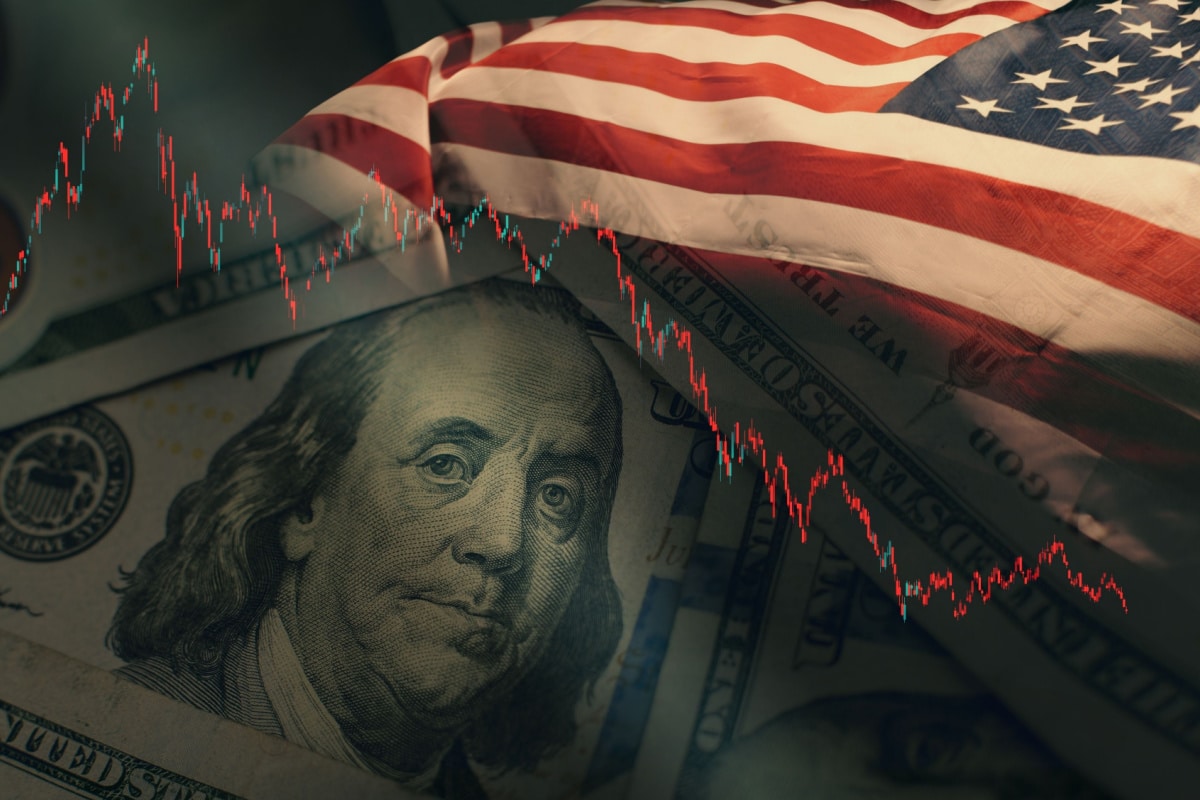Last Updated on 12th July 2023
Although the global economy continues to face headwinds, there are signs of resilience. This has led various economists to upgrade growth forecasts, while the World Economic Forum’s latest Chief Economists Outlook reported signs of ‘nascent optimism.’
The recently published Organisation for Economic Co-operation and Development (OECD) Economic Outlook denotes that the global economy is showing signs of improvement but the upturn remains weak, downside risks persist. They anticipate global GDP growth to be 2.7% this year, improving to 2.9% in 2024, and picking up during next year as inflation moderates.
Persistent inflationary pressures and tighter financial conditions do remain key challenges for policymakers around the globe. Core inflation has so far stayed stubbornly high in certain regions and, while economists do expect it to fall over the rest of the year, this decline is predicted to be at a slower pace than previously thought. The OECD deduce, ‘Headline inflation has fallen in most economies in recent months due to the downturn in energy prices, even though food and services prices have continued to rise rapidly.’ The US debt ceiling situation also weighed on market and economic sentiment in Q2.

Europe
The OECD project GDP growth in the Euro Area to slow to 0.9% this year and to strengthen to 1.5% next year. The report states, ‘Persistent inflation, declining incomes and elevated uncertainty following recent turmoil in the banking sector call for coordinated and resolute policy actions.’
On the continent, the Governing Council decided to raise the three key European Central Bank (ECB) interest rates by 25 basis points in June, in an effort to return inflation to its 2% medium-term target in a ‘timely manner.’ Headline inflation is expected to average 5.4% this year, before tempering to 3.0% next year. The move was in-line with expectations. With the main rate now sitting at 3.5%, the ECB has hiked rates at eight consecutive meetings since July last year. The benchmark rate is at its highest in 22 years. Christine Lagarde, ECB President indicated that a further rate hike was “very likely,” before adding, “We are not thinking about pausing,” which aligns with earlier comments saying the central bank still had “ground to cover” in its efforts to sufficiently restrict interest rates.
Official data released in June showed that the eurozone slipped into recession early in 2023. In Q1, economic output in the 20-country zone reduced by 0.1%, following a 0.1% contraction in Q4. A technical recession is typically defined as two consecutive quarters of negative economic growth in real GDP. The combination of high inflation, monetary tightening, energy shocks and the war in Ukraine, tipped the eurozone into a shallow recession, according to revised data from the EU’s statistics office. The report highlighted mixed country performances across the region, with southern European economies such as Portugal, Italy and Spain registering strong growth rates, while the Netherlands and Germany shrank. France posted mild growth. As with most regions, uncertainty around the US debt ceiling weighed on markets.
Switzerland
According to FocusEconomics, in Q1 2023 Swiss GDP increased to 0.3%, above the flat reading in Q4 2022. The economic growth in Q1 growth was the fastest since Q2 2022, outperforming others registered in the euro area. The Swiss economy has benefited from comparatively low inflation and interest rates; with improvements in public spending, exports and private consumption among the factors combining to support growth in the country. The OECD expect headline inflation this year to remain above the Swiss National Bank’s target range of 0-2%, highlighting potential downside risks such as house price corrections and a weakening foreign demand.
UK
The OECD are predicting GDP growth of 0.3% this year, improving to 1.0% in 2024, with government consumption and investment expected to ‘prop up the economy… Headline inflation is projected to slow on the back of declining energy prices and to come down close to target by the end of 2024.’
GDP figures released in June show the UK economy is estimated to have grown by 0.2% in April, following a fall of 0.3% the previous month, according to the Office for National Statistics (ONS). The latest data also revealed that on a broader scale, GDP rose by 0.1% in the three months to April.
The service sector was the main contributor to the uptick in growth, expanding 0.3% in the month, with consumer-facing services experiencing an especially large boost, growing 1.0% in April, following a fall of 0.8% in March. Robust trade in bars and pubs helped support growth in the sector. Meanwhile, the construction sector faltered, with growth falling 0.6% in April (following 0.2% growth in March) as rising interest rates and mortgage costs weigh on sentiment, making house buyers cautious.
According to Chancellor Jeremy Hunt, the overall GDP figures demonstrate an “underlying resilience”, although he did warn that inflation remains a “big issue,” for the country, before adding, “We have to do everything we can as a government, as a country, to support the Bank of England in their mission to squeeze inflation out of the system, and that is our primary focus.”
The Bank of England’s Monetary Policy Committee increased Bank Rate to 5% in June. Borrowing costs are now at their highest level since 2008. Those with tracker or variable rates have seen higher repayments and those on fixed rates are contemplating their next move. Inflation remained at 8.7% in May, driven by higher prices for flights, second-hand cars and supermarket food prices.
US
As widely expected, the Federal Reserve kept US rates unchanged at their meeting in June, the first time since March 2022 that the Fed concluded a meeting without raising rates. There are clear signals of increases ahead, with the majority of Fed officials anticipating a climb in rates from their current level of 5.00-5.25%, with expectations of two more hikes by year end. The central bank released a statement following the meeting concluding, ‘Holding the target range steady at this meeting allows the Committee to assess additional information and its implications for monetary policy.’
The news came just after US inflation data from the Labor Department showed that the rate fell to 4% over the 12 months to the end of May, down from 4.9% in April. The 11th consecutive month that price increases have eased, price reductions to eggs, petrol and furniture helped cut inflation to less than half of its peak a year ago.
The OECD project growth for the US of 1.6% this year and 1.0% in 2024, with growth in private consumption and investment ‘expected to moderate in response to the tightening in monetary and financial conditions.’
In early June, the US Congress approved a deal to lift the country’s borrowing limit, thereby averting a crisis days before the country was due to default on $31.4tn of debt. The bipartisan deal allows the Federal government to borrow money until after the next presidential election in November 2024. Senate Majority Leader Chuck Schumer said, “America can breathe a sigh of relief. For all the ups and downs and twists and turns it took to get here, it is so good for this country that both parties have come together at last to avoid default.”
Asia and Emerging Market Equities
Uncertainty about the debt ceiling weighed on Asian and Emerging Markets over the quarter, impacts varied between regions. Concerns around China’s economic recovery also impacted. Asian equities were held back by weakness in China, with disappointing economic data from April and signs of economic growth moderating. The OECD predict growth in China to rebound to 5.4% this year, followed by 5.1% in 2024. Although the lifting of zero-COVID restrictions released pent-up demand for services, export growth will be tempered by weak global demand according to OECD. The Japanese economy is projected to grow by 1.3% in 2023 and 1.1% in 2024, driven by domestic demand. Government support with domestic energy prices, combined with increased defence spending is expected to boost investment and consumption. India’s growth is projected to moderate to around 6% this year. In several other Emerging Market economies, including Brazil, growth is projected to slow due to weaker private consumption and exports, with Brazilian GDP projected to grow by 1.7% in 2023 and 1.2% in 2024, according to the OECD.
Commodities
Gold is currently trading at around $1,920 a troy ounce. Dollar strength weighed on the precious metal towards the end of June after Federal Reserve Chief Jerome Powell reiterated that more interest rate hikes were on the cards. Brent crude is currently trading at around $75 a barrel. Interest rate hikes which have fuelled debate over economic growth are likely to weigh on crude demand.
Looking Ahead
The relatively uncertain backdrop, along with divergent regional dynamics, inevitably means diversification will remain a vital component in any investor’s armoury. Spreading money in a globally diversified portfolio across a range of sectors and different size businesses should, as ever, prove an effective way to mitigate risk in the quest to build wealth. Maintaining a long-term outlook and philosophy, based on prudent risk management principles and avoiding panicked decisions continues to be a key element for successful investing. Financial advice is vital, so please do not hesitate to get in contact with any questions or concerns you may have.

Chase Buchanan Ltd is authorised and regulated by the Cyprus Securities and Exchange Commission with licence No: 287/15. Chase Buchanan Ltd offers services in the EU on a cross border basis as per the provisions of MiFID.
It is important to take professional advice before making any decision relating to your personal finances. Information within this document is based on our current understanding and can be subject to change without notice and the accuracy and completeness of the information cannot be guaranteed. It does not provide individual tailored investment advice and is for guidance only. Some rules may vary in different jurisdictions. We cannot assume legal liability for any errors or omissions it might contain. Levels and bases of, and reliefs from, taxation are those currently applying or proposed and are subject to change; their value depends on the individual circumstances of the investor. No part of this document may be reproduced in any manner without prior permission.
The value of investments can go down as well as up and you may not get back the full amount you invested. The past is not a guide to future performance and past performance may not necessarily be repeated. If you withdraw from an investment in the early years, you may not get back the full amount you invested. Changes in the rates of exchange may have an adverse effect on the value or price of an investment in sterling terms if it is denominated in a foreign currency.


